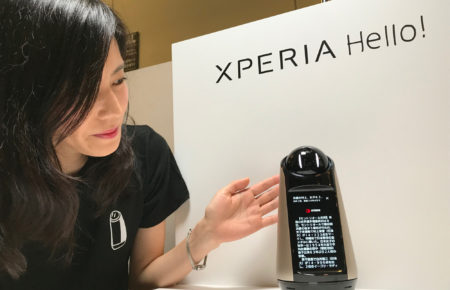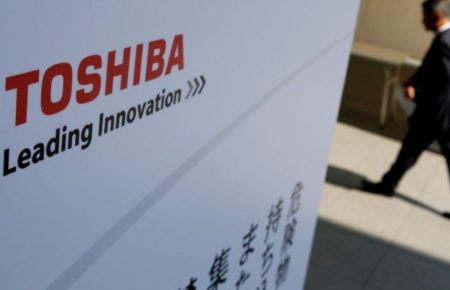Japan’s top three mobile phone carriers have begun trials of fifth-generation, or 5G, high-speed wireless communication technology, hoping to launch new services using the technology by as early as 2020.
The cutting-edge technology will likely be able to send 10 times more data per second than the current 4G technology and shorten the time needed for data transmission to a tenth of the present level, supporting high-definition imaging and internet-connected appliances and services.
The 5G technology will allow a two-hour film to be downloaded to a smartphone in only several minutes, said an official of NTT Docomo, one of the top three carriers.
Last month, KDDI demonstrated to the media the use of the 5G technology for virtual reality imaging linked to vehicle movements.
NTT Docomo has conducted a trial streaming of 4K ultrahigh-definition landscape images from an observation deck of Tokyo Skytree on a screen set up in the first floor area of the 634-meter-tall tower.
SoftBank Group plans to test the 5G technology for automated driving. In the experiment, data on a truck driver’s steering and pedal motions will be transmitted to driverless vehicles following in a convoy.
High-speed data transmission with the 5G technology is essential for such convoys because a lag could lead to an accident, SoftBank officials said.
The technology is also seen aiding the remote control of construction machines. NTT Docomo and KDDI plan to test 5G-based remote control of construction machines by teaming up with construction machinery maker Komatsu and general contractor Obayashi.
A frequency band for 5G communications is expected to be decided at an international conference in 2019.
The current 4G technology went into practical use in 2012, promoting the spread of smartphones.
“The leap that 5G will bring to our society is going to be even more revolutionary than what we experienced after the advent of 1G, 2G, 3G or even 4G,” Akira Matsunaga, senior director with telecom giant KDDI Corp.’s R&D Strategy Division, said during a news conference last month. “We believe 5G will indeed become the foundation of our future society.”
Under the next-generation network, digital data transfers with speeds of up to 10 gigabits per second will be possible — a breakthrough that will allow mobile Internet connections up to 100 times faster than what the Long Term Evolution (LTE) network currently offers, mobile carrier NTT Docomo has said.
According to Yukihiko Okumura, executive research engineer with NTT Docomo’s 5G Radio Network Research Group, the new network will allow smartphone users to download full-length movies within mere seconds. This compared with the current mobile network that often takes several minutes to download similar videos.
“We believe the faster network will promote the use of ultrahigh definition videos such as 4K and 8K on not only mobile devices but in digital street signs, as well,” Okumura said.
The mobile carrier aims to put the cutting-edge technology into commercial use by 2020 and is currently planning demonstrations as early as May.
It plans to test how 5G would extend the use of virtual reality for tourists at a location near Tokyo Sky Tree in Sumida Ward or by adopting it for internet-connected cars in the capital’s Odaiba waterfront area.
Firms are ramping up their efforts to develop the 5G system.
In February, KDDI announced that it had successfully carried out an outdoor experiment featuring the seamless transfer of data by quickly switching base network stations when data transmissions were blocked by objects.
In the experiment, conducted jointly with South Korea’s Samsung, KDDI used a high, 28GHz frequency band, which has been used for satellites but not for mobile internet. Higher bandwidth is suited for faster wireless data transfers but also prone to interference by obstructions.
The experiment, carried out in an urban area and on expressways where cars are driven at high speeds, showed that such a frequency is a feasible option for a 5G network even in urban settings like metropolitan Tokyo, KDDI said.
SoftBank Corp. has also joined the fray, with claims that it has become the world’s first carrier to commercialize a technology known as Massive MIMO, a potentially vital part of a successful 5G network that uses a large number of antennas to alleviate congestion.
Since September, the company has offered a high-speed data transmission service using the technology at crowded sites such as the Center Gai shopping street near the busy scramble crossing in central Tokyo’s Shibuya district, and at sports and concert venues like Tokyo Dome.

Introducing the technology will help the company develop its own 5G system, according to a SoftBank spokesman.
Industry experts say the new network is a game-changer, driving the development by firms as they seek to create a society where numerous internet-connected devices make people’s lives both more convenient and secure.
Last month, KDDI announced it will begin a joint experiment with security company Secom as early as May to test how the 5G network can upgrade current security systems.
Secom has said it believes 5G’s faster data-transmission speed will make it possible to transfer high-resolution moving images captured by security cameras to a control center without delay or pause.
“We expect 5G will be able to transfer moving images of a fine enough quality to identify a person’s face . . . or to read the numbers on a vehicle’s license plate clearly,” Secom official Hiroyuki Teramoto said at a news conference in Tokyo last month.
But faster speeds are not the only feature highlighted by the cutting-edge technology, as 5G is expected to allow more devices — from cars to rice cookers — to go online simultaneously, making the so-called internet of things (IoT) a more prominent part of people’s lives.
5G, which is able to handle up to 100 times more connected devices than LTE, will likely to become the “integral part” of an IoT society, the communications ministry said.
In a future where a multitude of everyday devices — from home appliances to self-driving cars — are controlled over the internet, providing abundant connectivity will be a prerequisite, NTT Docomo’s Okumura said.
Although household appliances usually do not require huge amounts of data, “we have to be ready for a society where an overwhelming number of objects are connected to the internet,” Okumura said. “We need an infrastructure that can handle a myriad of information coming from them.”
High-speed response time is another key aspect of 5G, which is believed to have less than 1 millisecond of latency, or the measure of delay from one networked point to another.
The ultralow latency will make the wireless network reliable enough to remotely control robotics used in operations that require high levels of accuracy, including construction work and medical surgery, KDDI’s Matsunaga said.





